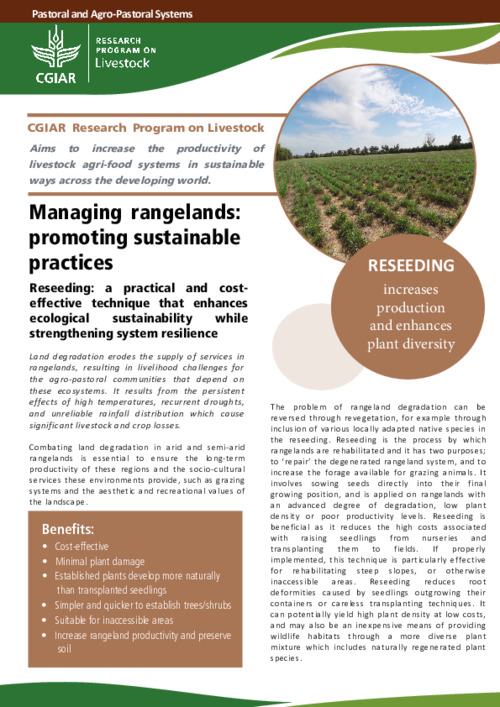Managing rangelands: promoting sustainable practices: Reseeding: a practical and costeffective technique that enhances ecological sustainability while strengthening system resilience
Abstract
The problem of rangeland degradation can be reversed through revegetation, for example through inclusion of various locally adapted native species in the reseeding. Reseeding is the process by which rangelands are rehabilitated and it has two purposes; to ‘repair’ the degenerated rangeland system, and to increase the forage available for grazing animals. It involves sowing seeds directly into their final growing position, and is applied on rangelands with an advanced degree of degradation, low plant density or poor productivity levels. Reseeding is beneficial as it reduces the high costs associated with raising seedlings from nurseries and transplanting them to fields. If properly implemented, this technique is particularly effective for rehabilitating steep slopes, or otherwise inaccessible areas. Reseeding reduces root deformities caused by seedlings outgrowing their containers or careless transplanting techniques. It can potentially yield high plant density at low costs, and may also be an inexpensive means of providing wildlife habitats through a more diverse plant mixture which includes naturally regenerated plant species

